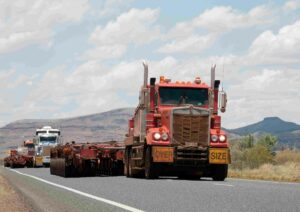When are Labour Agreements Used?
Labour agreements are used in Australian skilled migration when employers need to sponsor skilled workers from overseas who do not meet the standard skilled migration criteria. These agreements are designed to address specific labour shortages in certain industries or regions of Australia.
With a labour agreement, employers can sponsor skilled workers for subclass 482 Temporary Skills Shortage (TSS) visas, subclass 494 Skilled Employer Sponsored Regional (Provisional) visa and subclass 186 Employer Nominated Scheme (ENS) visa programs.
Read on: Why you should give a DAMA about Labour Agreements
Labour Agreements in Australian Skilled Migration
Labour agreements are an alternative to the standard skilled migration program which requires workers to meet certain criteria, such as having an occupation on an existing skilled occupation list and meeting English language requirements.
With a labour agreement, employers can sponsor workers who may not have an occupation on the standard skilled occupation lists. If the employer can show the skills shortage is critical, they also might be able to get concessions on the age restrictions, English language requirements or even the Temporary Skilled Migration Income Threshold (TSMIT).
What skilled visas do labour agreements affect?
Once a labour agreement is in place, it enables the employer to sponsor employees for:
-
- subclass 482 Temporary Skills Shortage (TSS) visa
- subclass 494 Skilled Employer Sponsored Regional (Provisional) visa
- and subclass 186 Employer Nominated Scheme (ENS) visa programs.
Are there different types of labour agreements?
There are several types of labour agreements available, each designed to address different labour shortages in Australia. These include:
- Company-specific labour agreements: These agreements are tailored to the specific needs of a particular employer and are valid for up to five years.
- Industry labour agreements: These agreements are designed for industries experiencing widespread labour shortages and are valid for up to three years. For example, the Technology Skills List (TSL) focuses on technology-related occupations, allowing employers in the tech sector to address skill shortages through targeted migration.
- Designated area migration agreements (DAMA): These agreements are designed for specific regions of Australia and allow employers in these regions to sponsor workers for occupations that are not on the skilled occupation list.
- Project agreements: These agreements are for large-scale projects that require a significant number of skilled workers from overseas.
On Hire Labour Agreements
Employers looking to on-hire sponsored employees need to have an ‘On Hire Labour Agreement’ in place.

How Complicated Are Labour Agreements to Get?
The process of obtaining a labour agreement can be complex and time-consuming. Employers must demonstrate a genuine need for skilled workers and a commitment to training and employing Australian workers. The agreements are typically negotiated on a case-by-case basis. However, with the right support and guidance, the process can be made easier. Many employers choose to work with a migration agent or lawyer who can assist them with the negotiation and application process.
Labour agreements provide access to skilled labour, flexibility in the recruitment process, and a streamlined application process. While they can be complex to obtain, with the right support, they can be a valuable asset for businesses facing labour shortages.
Contact us

